The Muscle Car Myth: How America Fell in Love with Terrible Engines
Author Bio: Danny is a co-owner of Driveway Dreams, an ASE Certified Master Technician with over 26 years of experience, and previous freelance writer for Car Engineer. For more than 17 years, he's owned and operated his own independent repair shop in Livonia, Michigan. Subscribe and follow, Danny!

Let’s get one thing straight — the muscle car era wasn’t all thunder and glory.
Yeah, there were legends. 426 Hemis. LS6s. Boss 302s. But buried beneath the hood scoops and burnouts?
Disaster. After. Disaster.
We’re talking about engines that detonated dreams and turned “performance” into a punchline. Overhyped blocks that ate gaskets for breakfast and coughed their guts out on Main Street. And the kicker? We still worship them.
I’m not here to coddle your nostalgia. I’m here to blow it apart.
As a Mechanic from Detroit, I’ve seen these engines up close — puking oil, spitting rods, stalling in shame. This post is a decade-by-decade takedown of the worst engines muscle cars ever tolerated — with receipts.
So grab your torque wrench. We’re about to rip open the myth, bolt by bolt.
Danny's Muscle Car Engine Alert System
Get notified before you buy a muscle car with a known catastrophic engine problem
- Weekly alerts on which engines are developing new problems
- VIN decoder guides to avoid problem production batches
- Early warning signs to catch failures before they happen
- Insider dealer service bulletins they don't want you to see
1960s – Glory Days and Gut Punches
Ah, the ‘60s. Chrome. Carbs. Compression ratios over 10:1. It was the golden age of horsepower — and the beginning of America’s long, toxic relationship with unreliable performance.
We fell in love with big-blocks that only made sense at full throttle, tuned for racing, sold to teenagers, and barely drivable in traffic.
Let’s start with a sacred cow.
Chrysler's 426 Wedge: Paper Tiger Muscle
The 426 Wedge might be the most overrated engine ever shoved into a Charger. Sounds harsh? Get ready.
It had displacement. It had a reputation. It had massive heads that promised raw power.
But in the real world? Slower than a 440 Six Pack. Harder to keep running than a watch full of sand.
Chrysler detuned the 426 Wedge into mediocrity. Instead of building a street terror, they installed a restrictive intake and called it a day.
Owners were furious.

Old-school quote from a guy I knew in Detroit:
“All that money, and my neighbor’s 454 Buick ate my dust. Should’ve used it as a boat anchor.” No off-the-line punch. No crisp throttle. Just a sluggish V8 that craved high-octane fuel and expert tuning most drivers never bothered with.
Common Fixes:
- Edelbrock intake manifolds
- Headers and exhaust systems
- Distributor upgrades
- Cost: $250–$400 in the ‘70s = $3,500+ today just to make it perform."
Better Option: Buick 430. Torquier than most, and a lot more forgiving on the street. Or a Cadillac 472. Smooth power delivery, and you can actually drive it every day without needing a pit crew.
Chrysler’s Street Hemi: Glorious... and Gloriously Picky
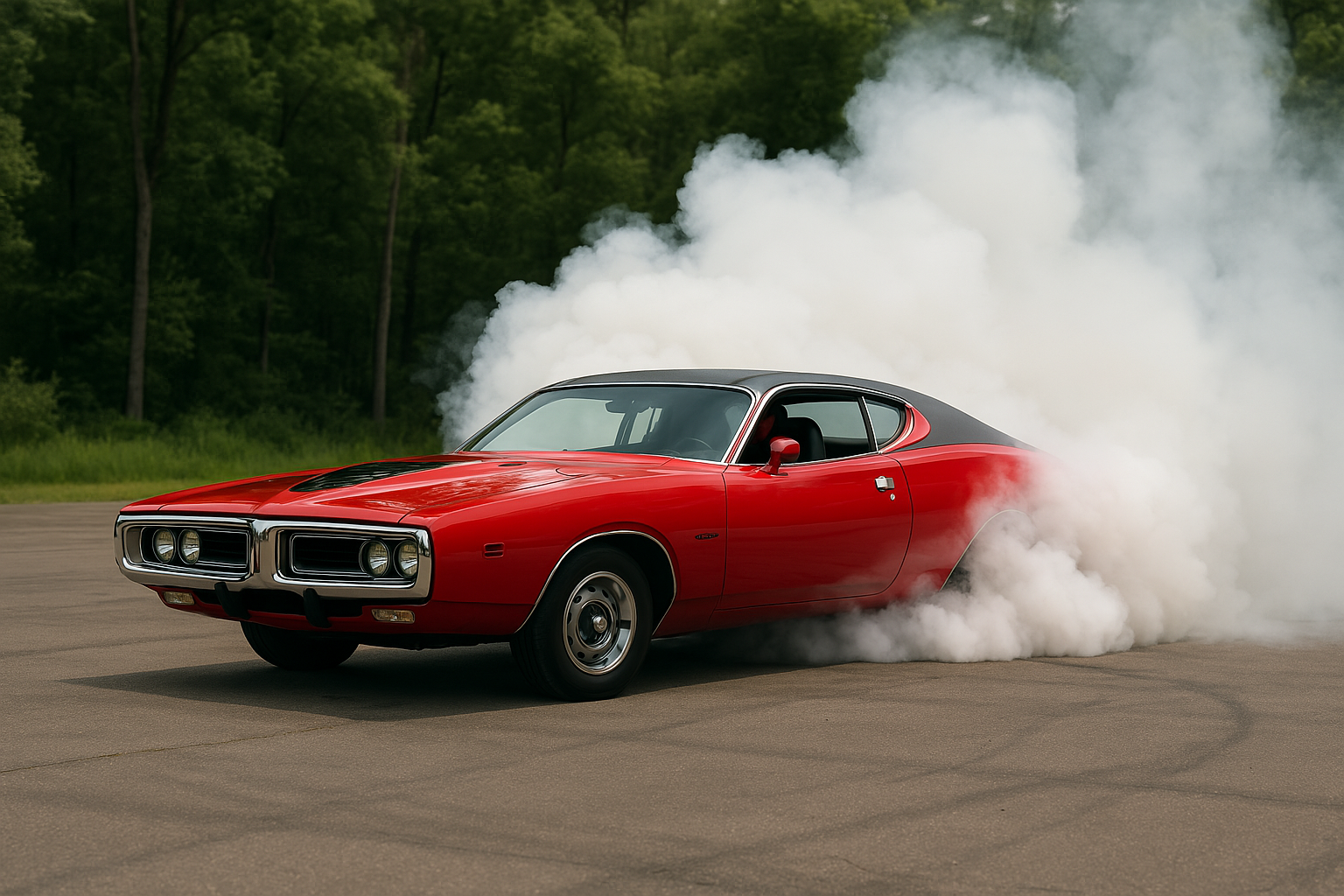
Yeah, yeah — the 426 Hemi is the king of the muscle era. But here’s the secret: it was a pain in the butt to live with.
Dual carbs. Solid lifters. High-octane only. Needed constant tuning. This wasn’t a street engine — it was a race engine in disguise, and it demanded sacrifice.
One quote from a V8 Buick forum said it best:
“There’s nothing overrated about a Hemi... [but] it’s not the most desirable as far as keeping [it] tuned for the street.”
Translation? You better know your lash settings and keep that timing dialed in — or she’ll blow smoke like a ‘70s Cheech & Chong van.
Common Fixes:
- Carb sync every few months
- Valve adjustments every 6–12k miles
- Drop compression if you couldn’t find high-octane
- Cost to maintain today? Up to $500 per adjustment — if you can find a tech who knows how
Better Option: Mopar 440 Six Pack. Same vibes, 90% of the power, half the maintenance. Or a Ford 428 CJ. Less fuss. More street brawling.
And that was the “glory decade.” Think the ‘60s were bad? Wait till the ‘70s show up — with gutless V8s, smog-choked intakes, and more catastrophic failures than a Pinto in rush hour.
Keep scrolling. It gets worse.
The 1970s: Emissions Strangle, Disasters Mingle
By 1973, muscle cars went from quarter-mile monsters to overweight clunkers gasping for air.
You didn’t need a dyno to measure the drop in performance — you could time it with a calendar.
Let’s start with one of GM’s most embarrassing moments.
Chevy Vega 2.3L: Aluminum Annihilation

In 1971, GM looked at America’s small car market and said, “Let’s build a world-beater.”
What they built was a self-destructing engine wrapped in rust.
The Vega’s 2.3L aluminum-block inline-4 was an experiment — no cylinder liners, just a high-silicon alloy where the piston was supposed to “wear into” the bore. Yeah. That worked about as well as it sounds.
The minute this thing overheated — which it often did — the cylinder walls scuffed, warped, and gave up on life. Oil consumption skyrocketed. Compression vanished. Engines failed by 30–40k miles.
CarTalk user “texases” put it bluntly:
“The engine burned oil quickly… overheated… resulting in worn aluminum cylinders and blown head gaskets.”
And the best part? GM won Car of the Year for this aluminum grenade in 1971. Can’t make this stuff up.
Fixes (ha!):
- Re-sleeve the block (if it wasn’t already warped)
- Add a coolant overflow tank to help stop the boilover
- Cost back then: $800–$1000 = $5,000+ today
Better Option: Anything. Seriously — even a Pinto 2.0 was better. Or grab a Datsun 510 and never look back. Hell, a Chevy Nova inline-6 was indestructible compared to the Vega’s four-banger from hell.
Ford’s 460 V8 & Variable Venturi Carb: Big Block, Bigger Joke
Want to know what happens when you slap emissions gear on a torque monster without redesigning it?
You get the Ford 460 in 1975. Once a 365-hp brute, now a 200-hp paperweight smothered in vacuum hoses and early emissions tech.

Then Ford added the infamous Variable Venturi carburetor — a “smart” carb that couldn’t idle properly if its life depended on it. Which, ironically, it did.
Dealership mechanics hated it. One told me straight:
“You could spend three hours tuning it, and it’d still stall when the A/C kicked on.”
Fun times.
Common Fixes:
- Rip off the VV carb and slap on a Holley
- Disable EGR and AIR systems
- Recurve distributor, ditch smog pump
- Cost: $500–$1,000 for a “de-smog” tune-up in the day
Better Option: Pre-’72 460. Or go GM and grab a 472/500 Cadillac motor with a normal Quadrajet. Just as thirsty, way less miserable.
Ford 255 V8: The Engine That Should’ve Stayed in the Trash
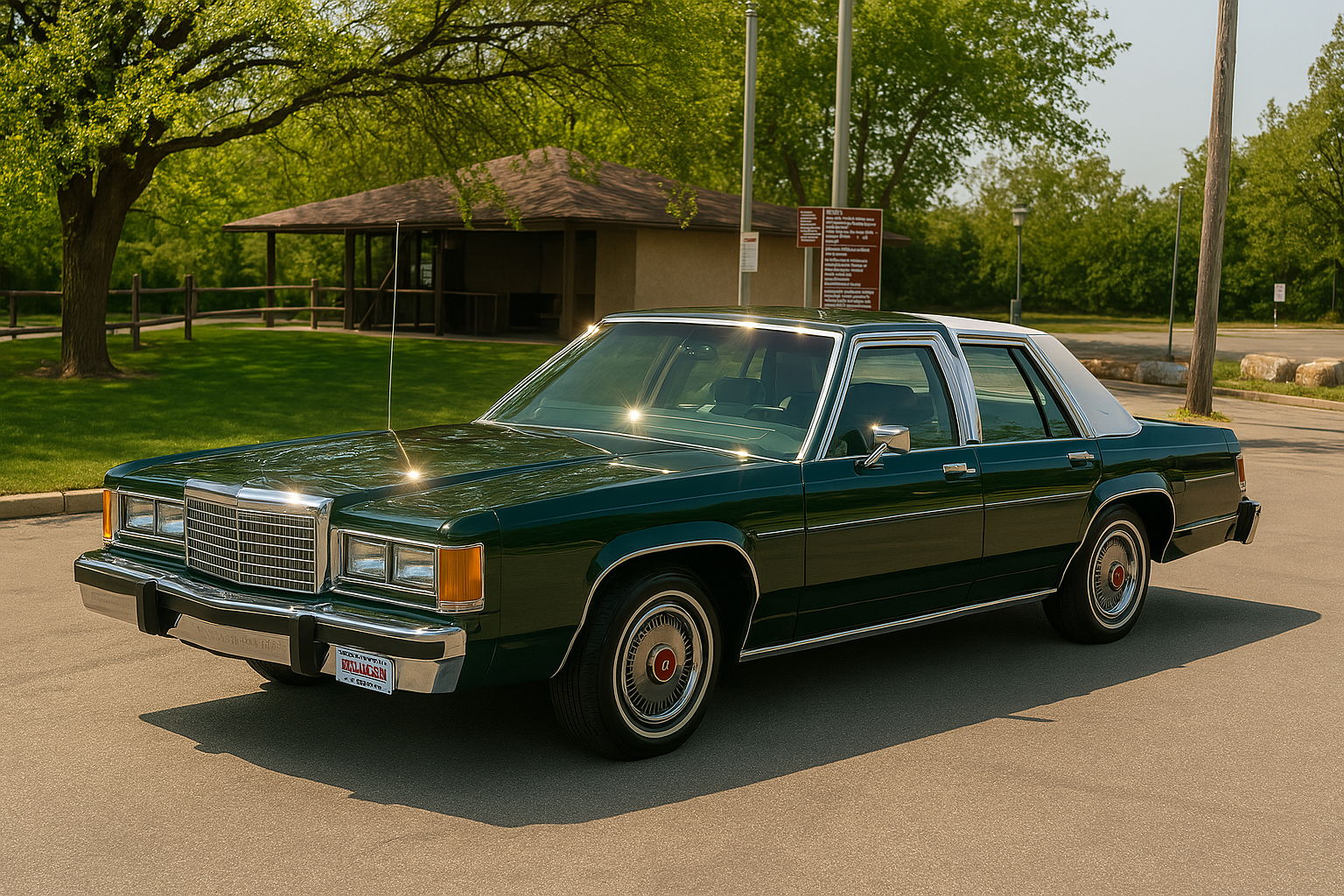
This was Ford’s bright idea in 1980: take the legendary 302 Windsor… and shrink it. You heard that right — the 255 cu in V8 was a destroked 302 with the power of a four-cylinder and the torque of a sewing machine.
It wheezed out 120 hp. 120. And it still pinged on premium.
A high school buddy had one in his LTD. We used to joke it was the only V8 that could get outrun by a riding mower.
Common Fixes:
- Swap it out. Seriously, that’s it. Put a real 302 or 351 in. Nobody fixed a 255 — they just buried it.
Better Option: Literally anything else. A 4.9L Ford inline-6 had more grunt. The 255 is a certified punchline in Blue Oval history.
Ready for peak GM failure?
Because the ‘70s weren’t done until Oldsmobile took a gas engine, made it diesel, and ruined diesel cars for America for decades.
Oldsmobile 5.7L Diesel (1978–1985): The Lawsuit Engine
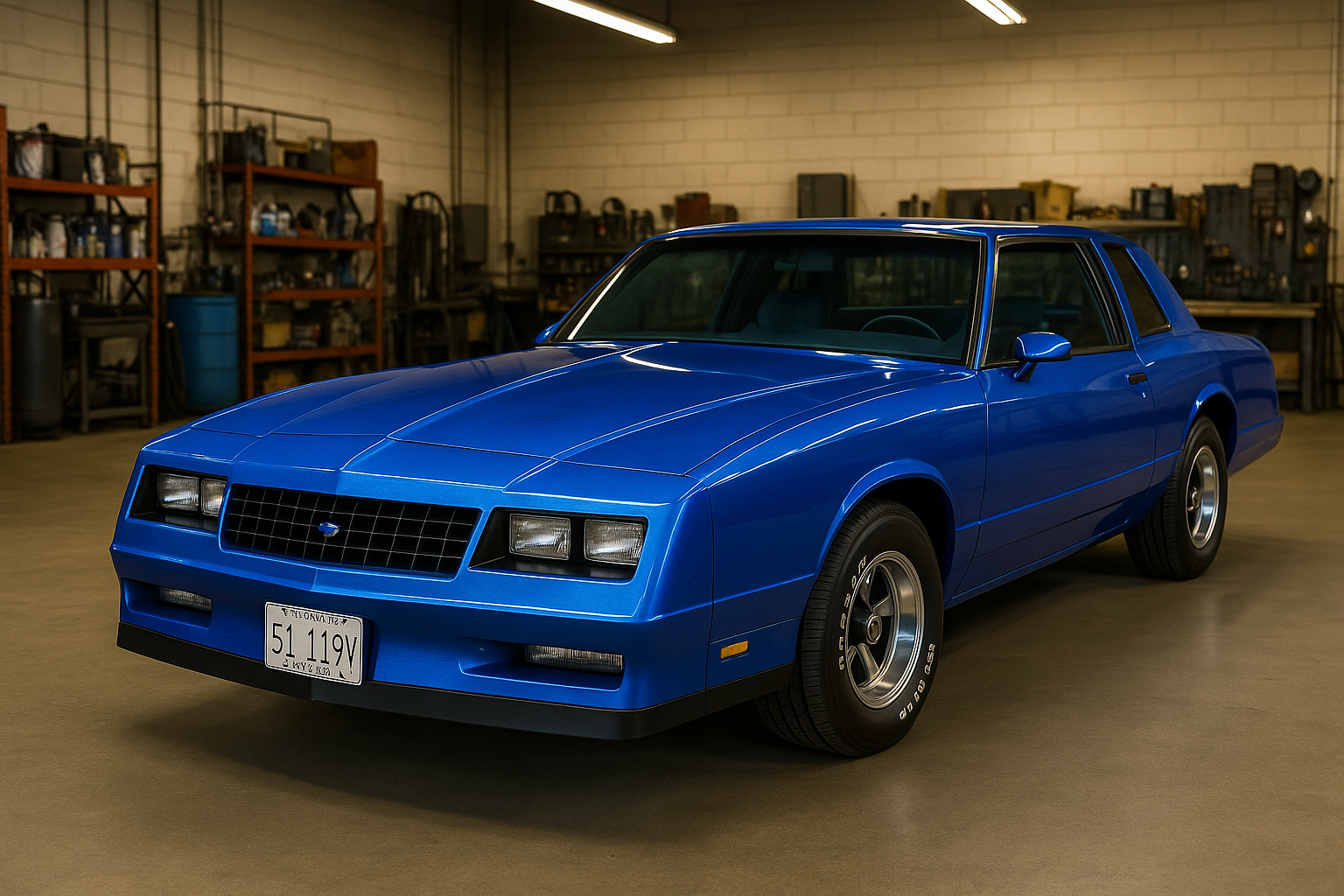
This isn’t just one of the worst muscle car engines. This is one of the worst engines ever built. Period.
Oldsmobile turned their 350 V8 into a diesel by changing heads and beefing up a few parts… but not enough. The head bolts were too small. The crank was weak. The injection system failed. And the result?
Catastrophic failure rates.
EPA bought a test fleet.Every single one broke before testing could finish. That’s not anecdote — that’s government-documented failure.
Farmers, cab drivers, families — everyone who bought one got burned. The Lemon Law? Yeah, that came out of this mess.
Common Fixes:
- Pull the engine and drop in a gas 350.
- ARP studs, thicker head gaskets if you dared keep it
- Cost to fix it right? $3,000–$5,000. Most didn’t bother.
Better Option: A regular Olds 350. Or just skip GM and get a Mercedes diesel — one that wouldn’t crack its block trying to start in winter.
The 1970s were a graveyard.
From self-immolating aluminum blocks to diesel disasters so bad they sparked federal laws, the ‘70s killed the muscle car dream faster than any gas crisis could.
Still think it couldn’t get worse?
The 1980s are about to roll up with turbos that cooked themselves, computers that couldn’t compute, and engines that shut off their own cylinders in traffic.
Keep scrolling. It’s about to get gloriously stupid.
This was the dawn of “high-tech.” And it went very, very wrong.
Let’s pop the hood and find the bodies.
The 1980s: Turbo Temptations & Electronic Nightmares
Computers were new. Fuel injection was clunky. Emissions rules still ruled the day.
Carmakers got bold — and dumb.Engines had ideas. They just didn’t have the follow-through.
Here are the worst offenders from an era that promised innovation… and delivered warranty claims.
Ford 2.3L Turbo: Boost Now, Boom Later
This one hurts. Because the idea was solid.
A turbocharged inline-four that made V8 power out of a Pinto engine? Yes, please.
Ford slapped the 2.3L Turbo into everything:
- Mustang SVO
- Thunderbird Turbo Coupe
- Merkur XR4Ti
- Even the Mustang Indy Pace Car

On paper: 175–205 hp. In reality: Turbo lag, overheating, blown head gaskets. Rinse and repeat.
The early ones (pre-1985) didn’t even have intercoolers. Heat was the enemy — and these engines ran hot enough to weld spoons together.
I had an ’86 Turbo Coupe come in billowing white smoke like a Victorian chimney. Diagnosis? Cooked turbo and probably the head gasket too. The guy said, “It was fast as hell yesterday.” Yeah. Yesterday.
Common Fixes:
- Add an intercooler (if yours didn’t have one)
- Let it idle after driving to cool the turbo
- Install aftermarket head gaskets and stronger bolts
- Cost: Turbo replacement = $1,000+ in the ‘80s. Head gasket = $600+. Plus towing. Plus tears.
Better Option: The Mustang 5.0L HO V8. Less power (on paper), more reliability. Or a 1987+ Buick Grand National — another turbo car, but one that actually figured it out (eventually).
Cadillac V8-6-4: The Cylinder Dropout King
Let’s say you want to save fuel by shutting off cylinders at highway speeds.
Smart, right? Sure. Unless you’re Cadillac in 1981 and the computer running the system is dumber than a bag of lug nuts.
The V8-6-4 was a 368 cu in V8 that shut down cylinders to run on 6 or 4 when cruising. Problem was, the engine computer couldn’t keep up. Transitions were jerky. Delays in throttle response were dangerous. The engine constantly felt like it was missing.
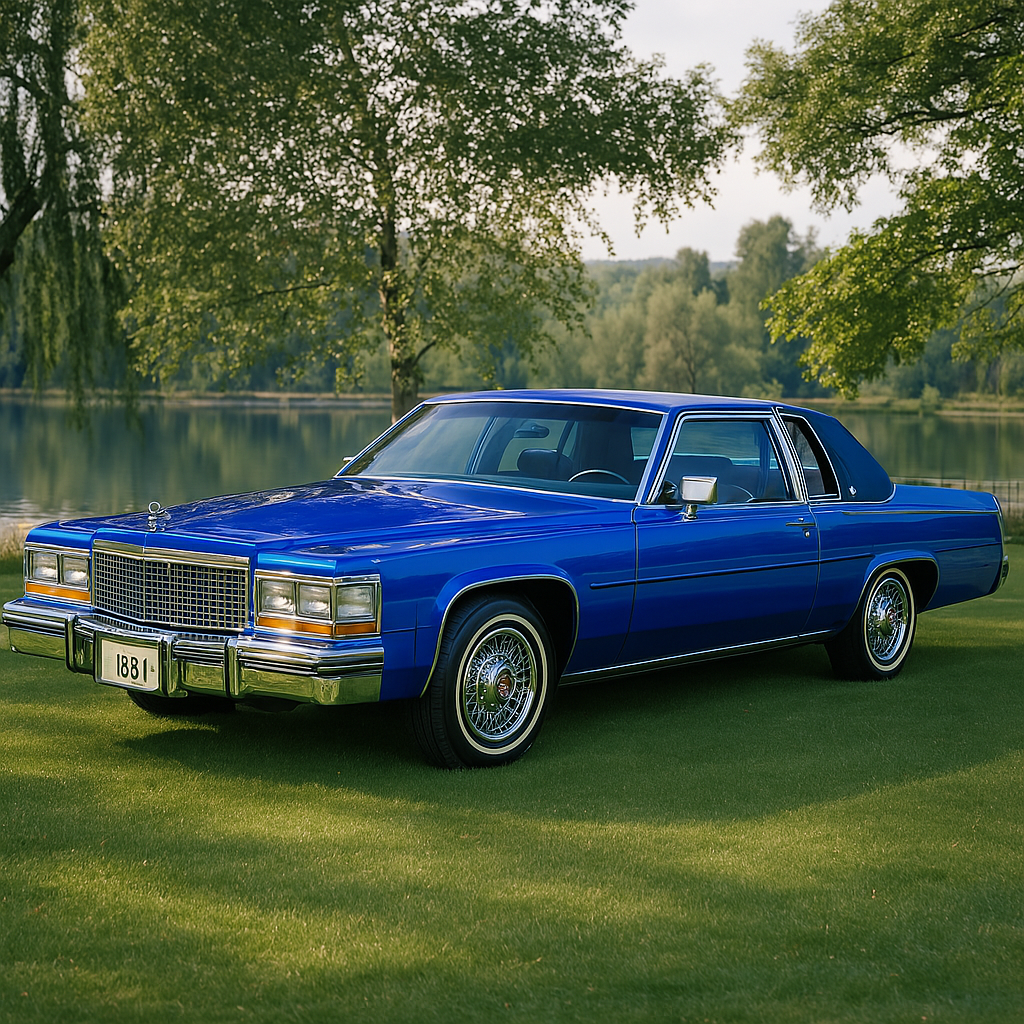
Cadillac forums are full of stories:
“Cut one wire… render it a straight V8… they’ll last as long as any cast-iron Cadillac block.”
And guess what? Dealers did just that. They quietly disabled the feature just to keep customers from rage-trading their cars.
Common Fixes:
- Unplug the control unit
- Lock it into 8-cylinder mode
- Pray the solenoids didn’t already start failing
- Cost: Practically free — if you had a mechanic who wasn’t a purist
Better Option: The Oldsmobile 307 V8 or even Buick 4.1L V6. Boring? Sure. But they started every time and didn’t hesitate like a caffeinated toddler trying to count.
Cadillac HT4100: The Real Horror Show
You thought the V8-6-4 was bad?
Meet its little brother: the HT4100, Cadillac’s next-gen aluminum V8, introduced in 1982. Supposedly “High Technology.” What it was? A death sentence.
It made just 135 hp. It had an aluminum block with cast iron heads. It blew head gaskets. It wore out camshafts. It overheated. It leaked oil. It was so bad, some owners got rid of the car before the warranty expired just to avoid the next failure.
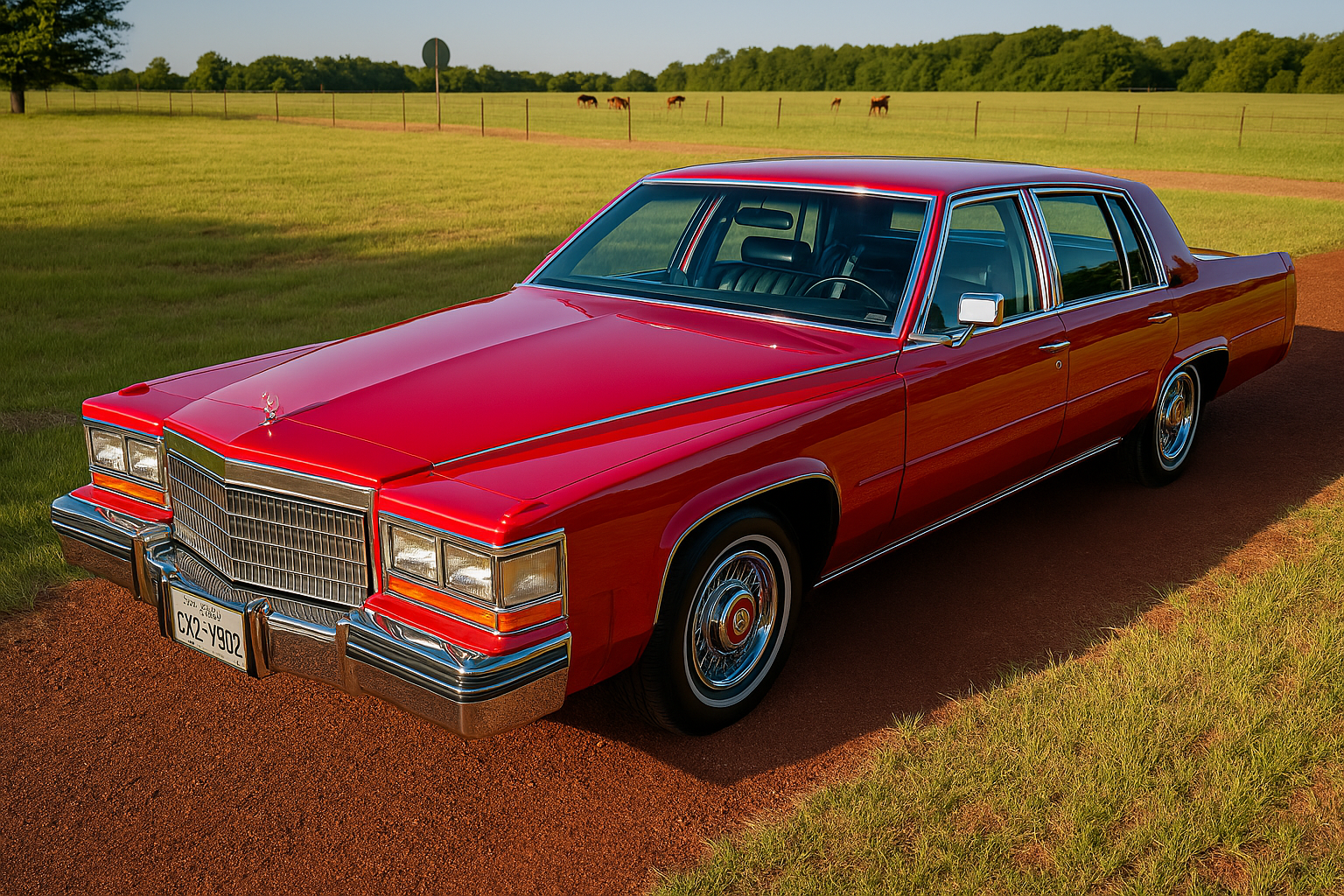
One forum quote nailed it:
“Acceleration was at a snail’s pace, the timing chain went bad twice… I sold it before the warranty ran out!”
Common Fixes:
- Swap to a 4.5 or 4.9L Caddy V8 (if you were lucky)
- Total engine replacement was the only real fix
- Cost: ~$5,000 for a reman engine today… IF you can find one
Better Option: Anything without “HT” in the name. Seriously — the Buick 3.8L V6 was a bulletproof tank compared to this trash.
At this point, we’re three for three on catastrophic Cadillac flops. Detroit luxury in the ‘80s? All smoke, no torque.
But don’t worry. We’re not done yet.
The next engine was supposed to be GM’s return to power… and nearly sank the Corvette.
GM LT1 5.7L V8 (1992–1997): The Optispark Disaster
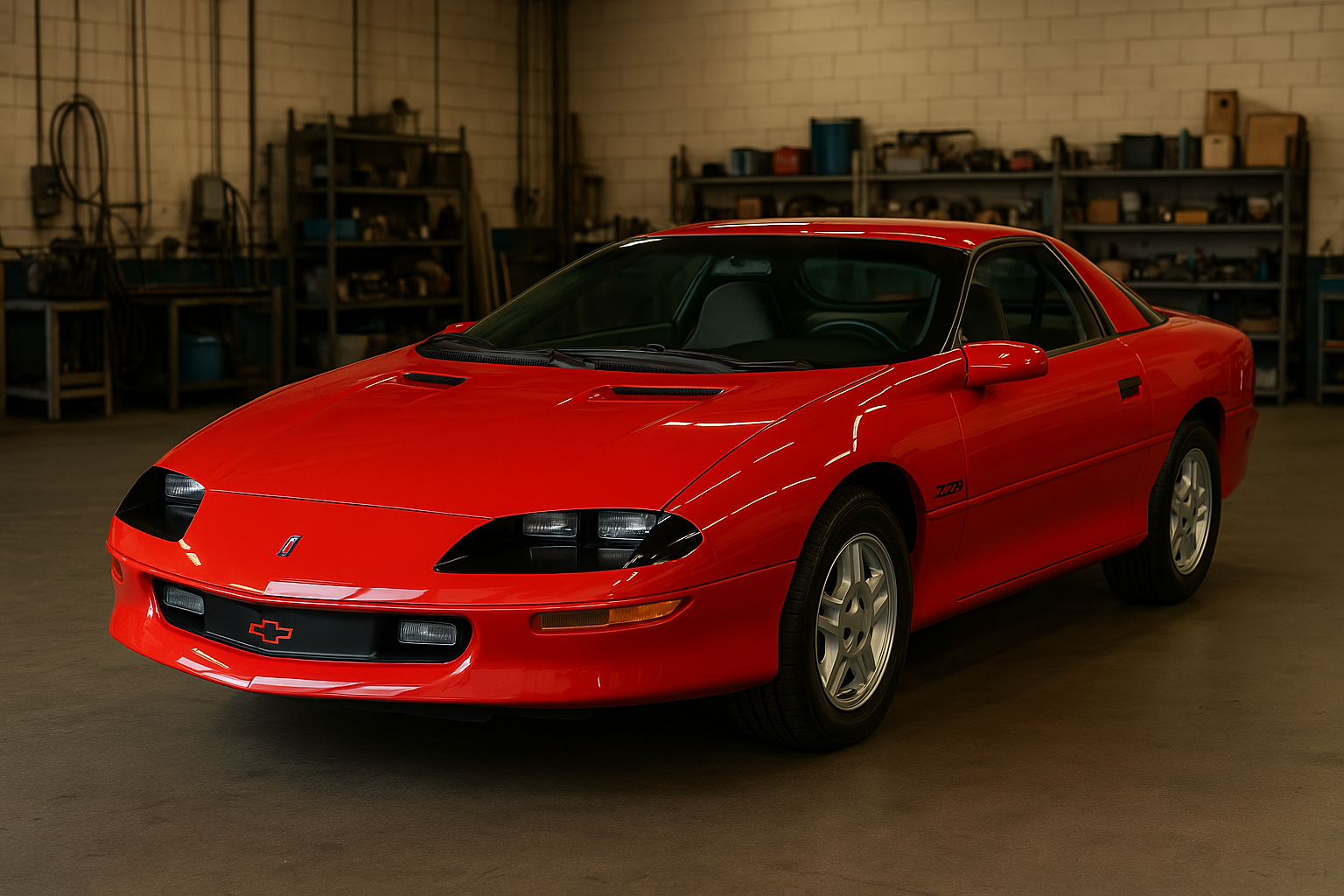
When the LT1 came out, GM was back in the game.
300 hp. Modern fuel injection. Rev-happy. A real small-block monster. Corvettes. Camaros. Firebirds. Even Caprice cop cars.
But deep inside that beauty was a time bomb: the Optispark ignition system.
It was mounted under the water pump. Let that sink in.
One water pump leak = moisture in the distributor = misfires, no-starts, or worse.
We had customers who refused to wash their cars because the Opti would short out if you looked at it wrong.
Forum quote?
“It was fast when it ran. But I was constantly watching the temp gauge and praying for dry weather.”
Common Fixes:
- Vent the Opti housing (aftermarket mod)
- Replace it every 60k miles like clockwork
- Pray your water pump doesn’t start leaking on a road trip
- Cost: $700–$1,000 per replacement, and it will happen more than once
Better Option: 1998+ LS1 V8. GM ditched the Optispark and went to coil-on-plug. Result? No more ignition roulette.
We’re not even at imports yet. But since we’re in the 1980s, we need to check in on the only engine shaped like a Dorito.
It spins. It screams. And it explodes with stunning precision.
Mazda 13B Rotary (1993–95 RX-7): Apex Predator, Apex Failure
The third-gen RX-7 was a masterpiece.
Twin turbos. Gorgeous lines. A rev limiter at 9,000 rpm. And under the hood: a rotary time bomb.
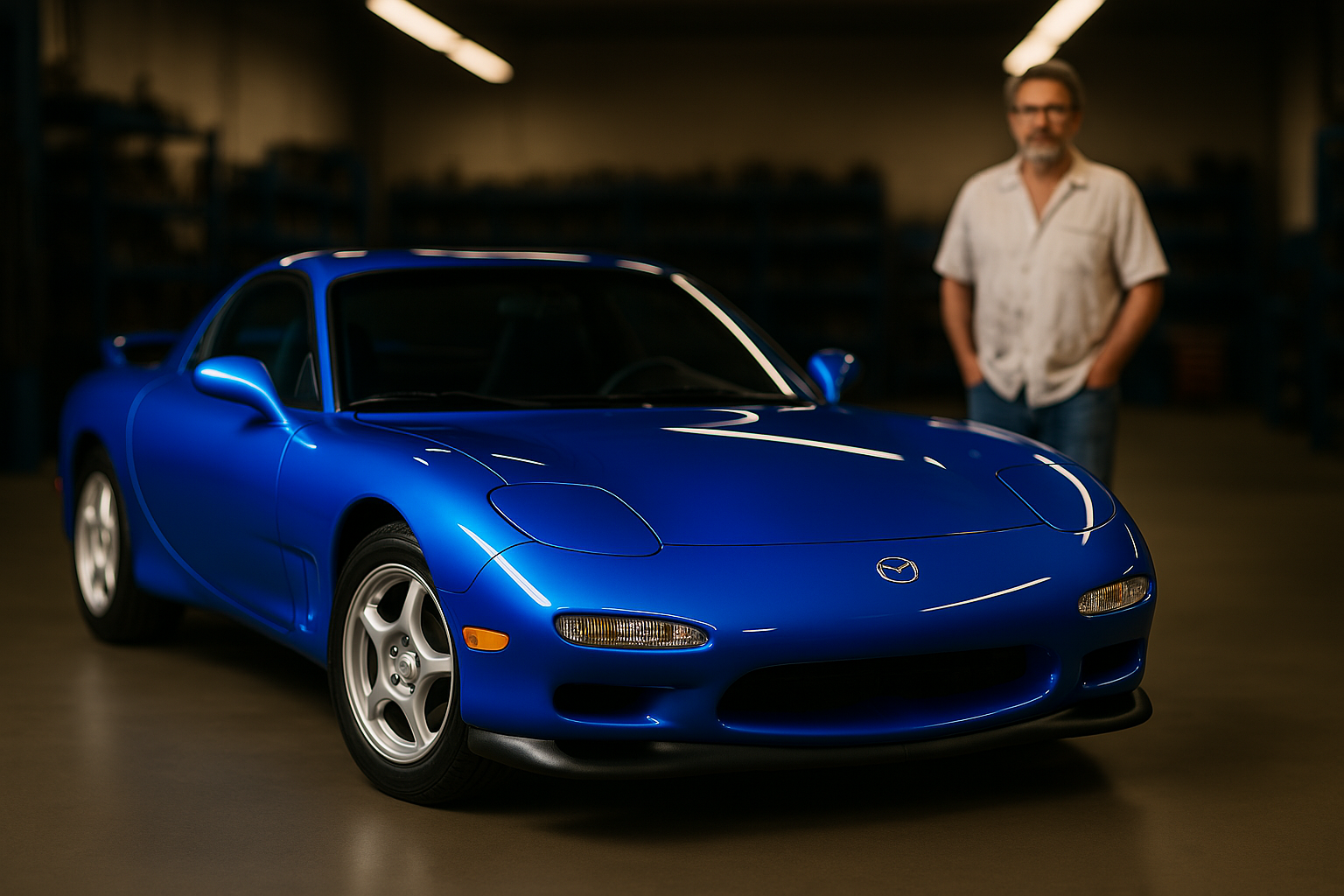
The 13B-REW rotary engine was incredible when new. But if you didn’t warm it up perfectly, check the oil every 300 miles, and rev it like it owed you money?
Kaboom.
Apex seals failed. Compression disappeared. Most owners faced rebuilds before 60k miles.
One Supra forum member nailed it:
“Some managed 80k, others a mere 30k… once the tips go, a rebuild is the only option.”
Common Fixes:
- Rebuild the engine (every 60k if you’re lucky)
- Premix oil into gas to help lubricate seals
- Or… swap in an LS V8 and call it a day
- Cost: Rebuild = $4k–$6k LS swap = $6k–$10k but way more reliable
Better Option: Toyota Supra MkIV (2JZ-GTE) — more power, infinitely more durable.Or a Honda S2000 if you wanted revs without explosions.
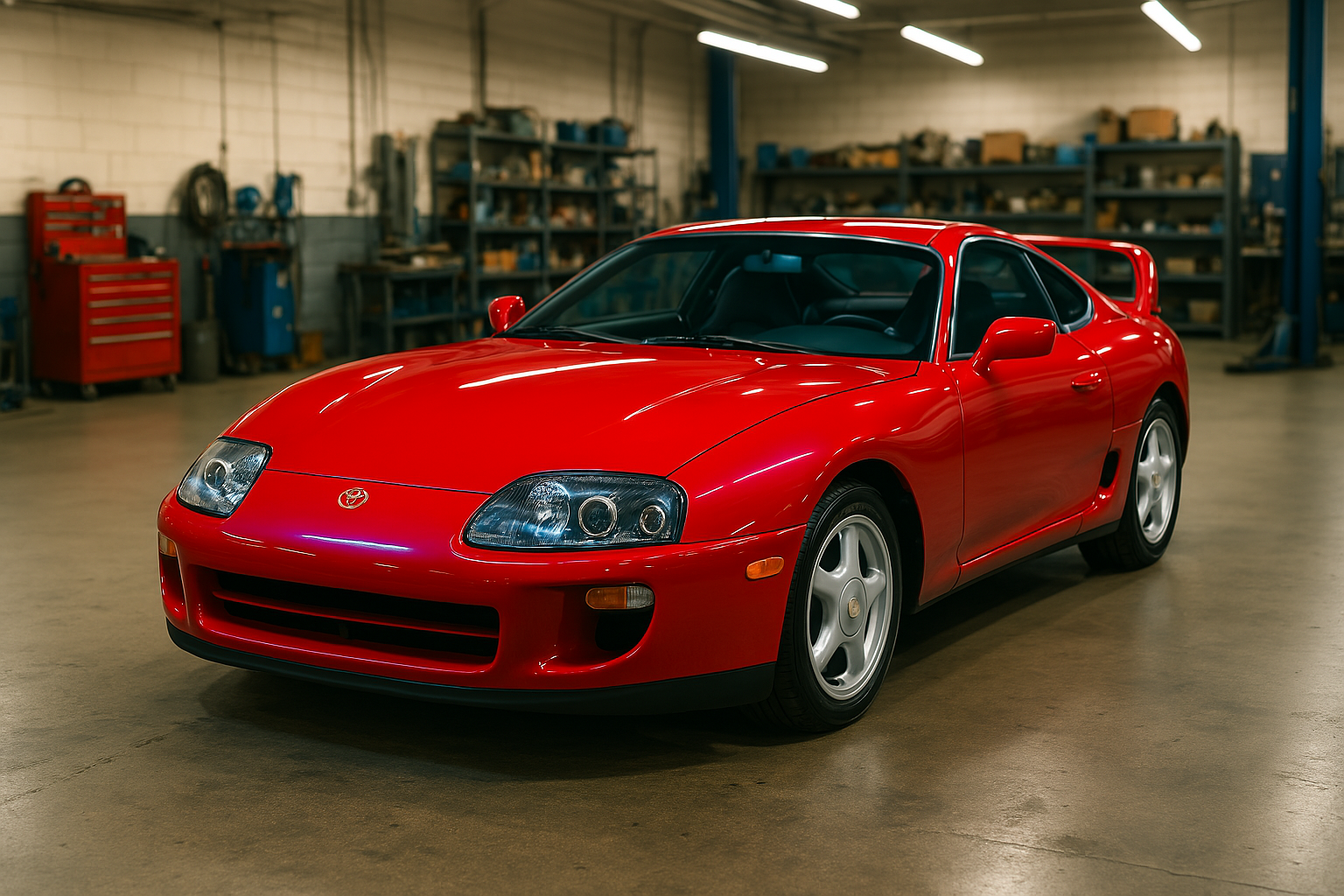
Still think the ‘80s were the comeback decade? Think again.
This was the decade of electronics gone wild, turbos without thermodynamics, and V8s that didn’t know how many cylinders they had.
And the ‘90s? Oh, baby. The ‘90s were just getting warmed up.
Keep scrolling — the next decade brings spark plug ejections, misfire meltdowns, and rotary déjà vu.
The 1990s: When “Modern” Meant “Moderately Explosive”
New tech, more power, and way more creative ways to fail.
From American V8s with precision ignition systems that couldn’t survive a rainstorm, to Japanese sports cars with engines that begged for rebuilds like a chain smoker asking for a lung transplant — the '90s were brutal beneath the badge.
Let’s dive right into the worst offenders. You’ll want to wear gloves.
GM LT1 V8 (1992–1997): The Optispark Strikes Back
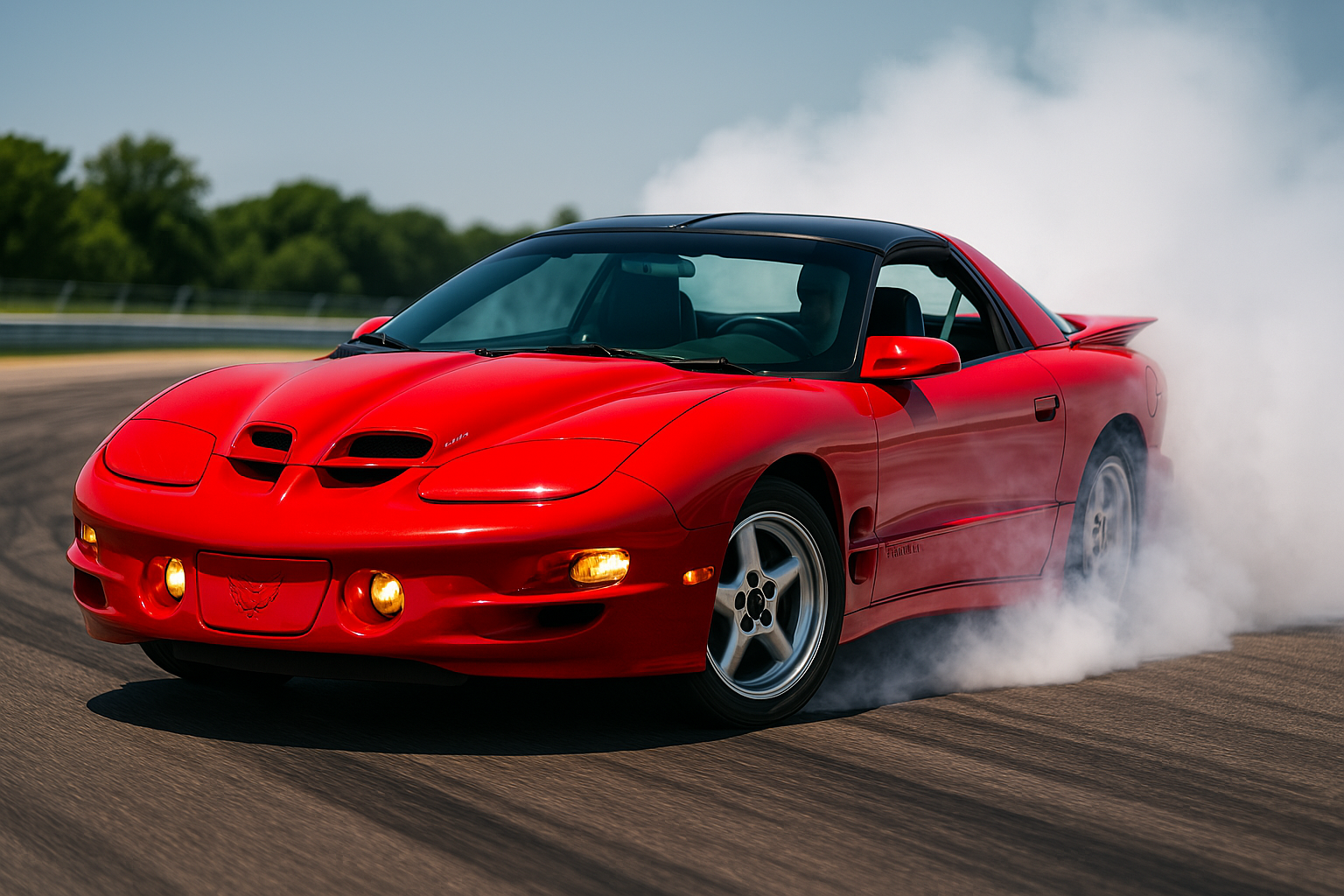
We already talked about this engine in the ‘80s section — but it deserves its own obituary in the ‘90s.
The LT1 was back, and now in everything from:
- C4 Corvettes
- Camaro Z28s
- Pontiac Firebirds
- Caprice cop cars
- Buick Roadmasters (yes, even the family wagon got the rocket)
Performance? Awesome. 300 hp. Great low-end torque. Revved like a champ.
But then it rained.And your ignition system drowned.
That Optispark distributor, mounted directly under the water pump, was still the Achilles heel. One tiny coolant leak, and your car ran like it was possessed.
Customers would come in with a misfiring Corvette, and when you opened the hood, it smelled like a sauna full of burnt electronics.
Forum gold:
“I never washed the car. I was scared of the Optispark shorting out.” — Some poor Z28 owner on a Camaro board
Common Fixes:
- Replace the Optispark every 60k miles
- Upgrade to MSD or aftermarket vented units
- Hope your water pump doesn't fail… again
- Cost: $700–$1,200 each time. It’s like a timeshare in hell.
Better Option: 1998+ LS1. GM finally pulled their head out of the spark plug hole and gave us coil-on-plug ignition. The LS1 was lighter, stronger, and didn’t panic when you got it wet.
Cadillac Northstar V8 (1993–2011): Head Bolts from Hell
This one was sneaky.
When the Northstar 4.6L V8 came out, it was supposed to be Cadillac’s tech triumph — DOHC, all-aluminum, 300 hp in the STS and Eldorado. On paper? Legit.
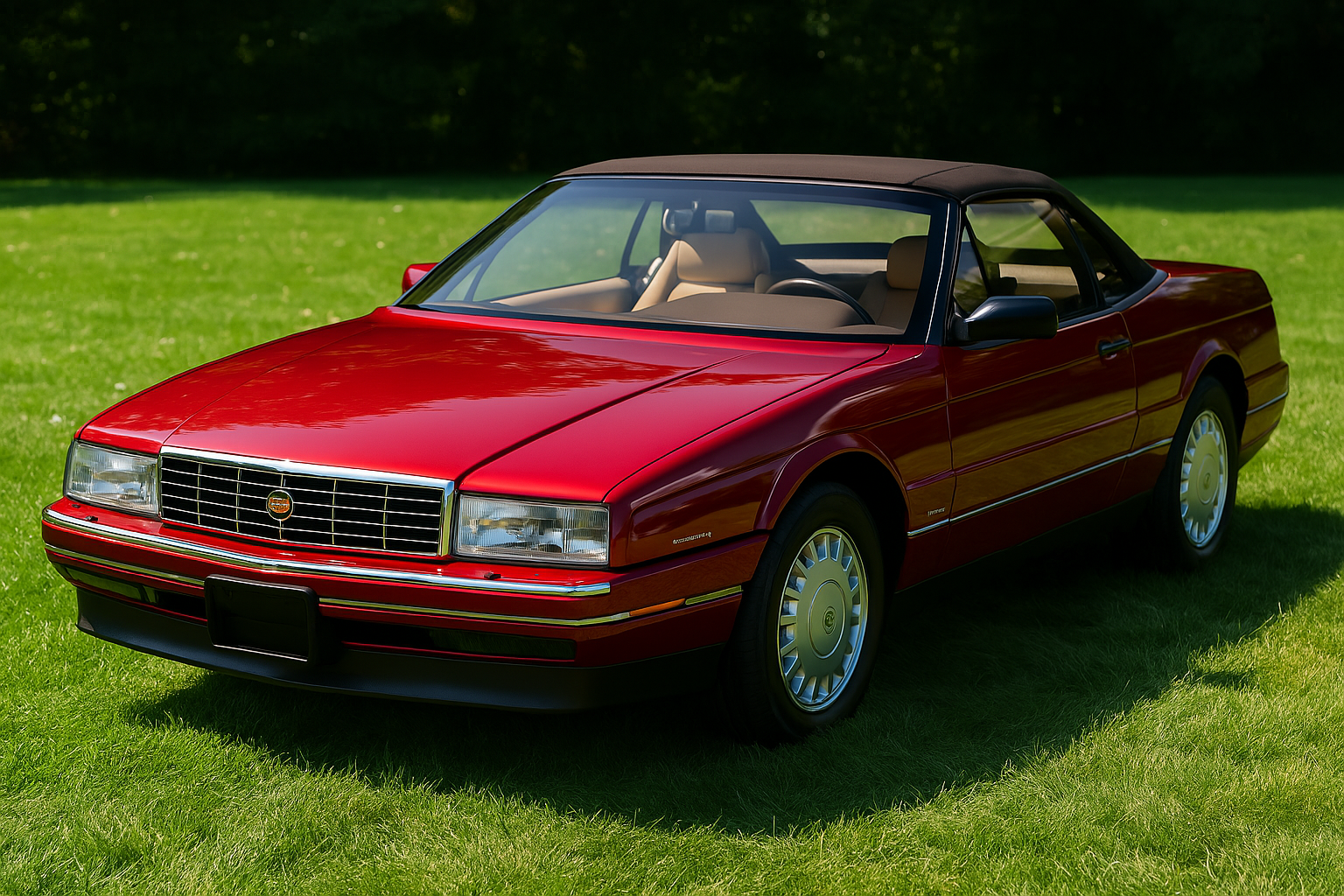
In reality? The head bolts pulled clean out of the block.
Yes. Not snapped. Not sheared. They straight-up pulled the threads out of the aluminum like a butter knife in Jell-O.
Once that happened, coolant dumped into the combustion chamber, and your Northstar became a Northstop.
Mechanics tried thread inserts. Then bigger inserts.Eventually, many just gave up and replaced the entire engine.
Common Fixes:
- “Time-Sert” head bolt repair kits (costly, finicky)
- Or full engine replacements
- Cost: $3,000–$6,000Bonus: It might happen again if not repaired perfectly
Better Option: The older pushrod Cadillac 4.9L V8 (1991–1995). Less flashy. But at least it didn’t try to self-destruct when you hit the gas.
Mazda 13B Rotary (Again): Now With More Rotors to Rebuild!
If you thought the RX-7’s engine issues were just a 1980s thing…Welcome to the third-gen RX-7 (1993–1995).
Same 13B-REW rotary engine. Same twin turbos. Same obsession with apex seals that last about as long as a Snapchat.
These cars were drop-dead gorgeous. Insanely capable. And then they’d blow up in your driveway.
- Apex seals: gone by 50k miles.
- Coolant seals: prone to failing under heat.
- Vacuum system: a jungle of hoses that crack and leak like a haunted airlock.
- Flooding: yes, still a thing — if you turned it on, moved it 3 feet, and shut it off, good luck restarting it.
Forum story:
“I’ve rebuilt my RX-7’s engine three times. I still love it. But now I keep a tow strap in the trunk.” — Actual RX7Club user
Common Fixes:
- Rebuild with stronger apex seals
- Swap the twin turbos for a single
- Install oil cooling upgrades and pre-mix oil in fuel
- Cost: $5k–$8k per rebuild. And you’ll need it. Again. And again.
Better Option: Toyota Supra MkIV (2JZ-GTE). Same ‘90s legend status. Same performance. Zero rotary nightmares.
Saturn 1.9L Twin Cam (1991–2002): Plastic Fantastic, Until It Isn’t
Okay, this isn’t “muscle,” but it’s such a legendary engine fail it has to be mentioned.
The 1.9L DOHC in Saturn S-Series was supposed to be GM’s “space-age” commuter engine.
It had plastic body panels, lightweight everything, and a weird head design.
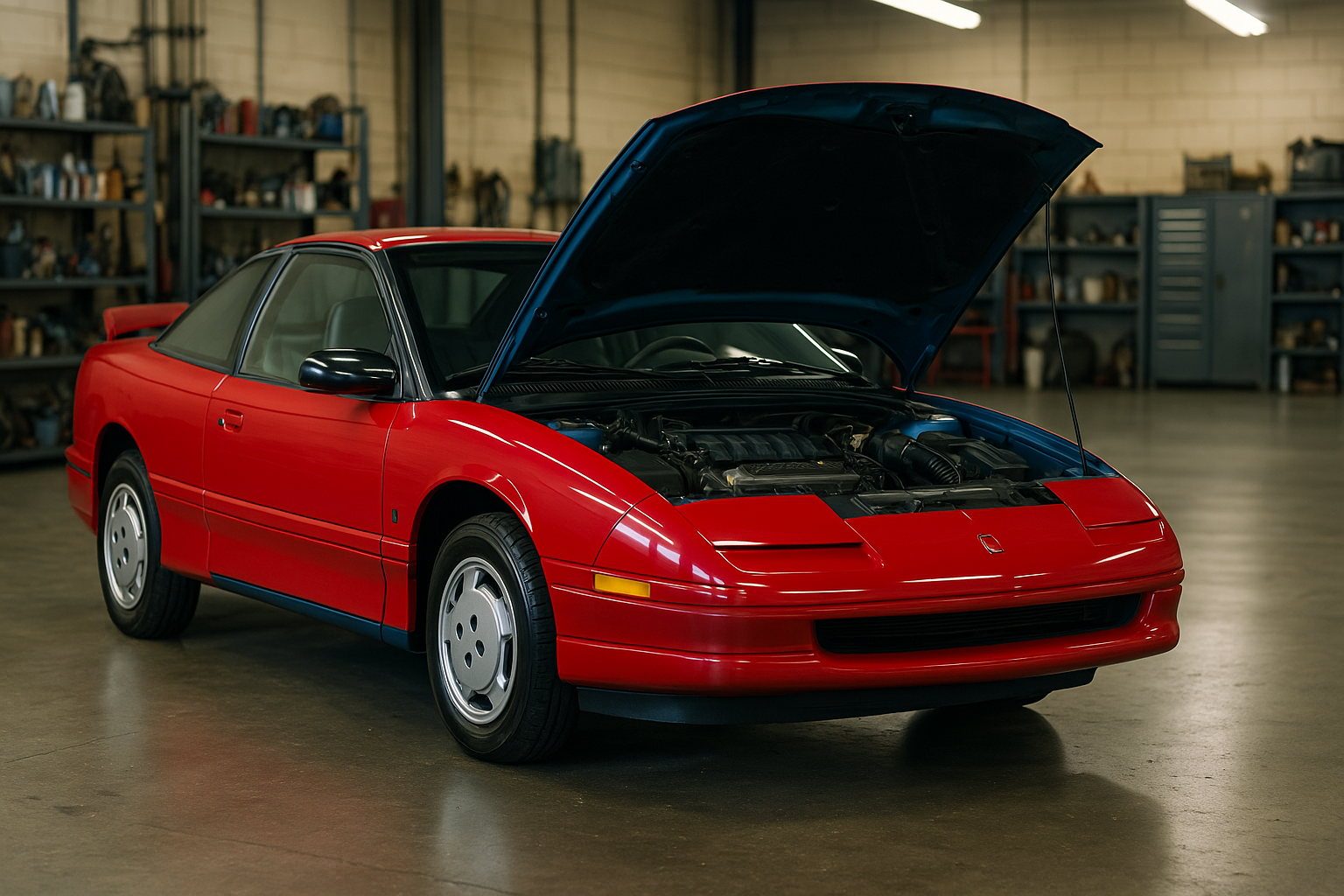
The flaw? It burned oil like a campfire.
By 60k miles, many were using a quart every 500 miles.By 100k, they’d be leaving smoke trails like they were crop-dusting.
Why? Piston ring design was garbage, and the engine would coke up fast — especially if oil changes were skipped.
Forum quote:
“At 80k, I had to top it off every other gas fill-up. I just carried a jug in the trunk.”
Common Fixes:
- Replace pistons and rings (not cheap)
- Or… throw in thicker oil and pray
- Cost: Full rebuild = $2,000+ Band-aid fix = $15 for 20W-50 and a good excuse
Better Option: Toyota Corolla. Honda Civic. Boring? Sure. But they’d hit 200k without even thinking about it.
Let’s not forget the worst part of the ‘90s: The promises.
Every car ad told you this was the “dawn of smart engines,” the “return of real performance,” or the “future of driving.”
And then? Your Optispark died in the rain, your head gasket blew on the freeway, and your rotary apex seal tapped out mid-corner.
Want more? Good. Because the 2000s are about to light up your checkbook with ejected spark plugs, failed diesel dreams, and more tech tantrums than a toddler at Disneyland.
Keep scrolling. It gets worse.
The 2000s: New Millennium, Same Old Explosions
This was the decade where muscle “came back.”We got Mustangs, Chargers, Camaros, and trucks that sounded mean and hauled even meaner.
But for every Coyote V8 success story, there was a 5.4L Triton tragedy or a 6.0 PowerStroke ticking time bomb waiting to ruin your weekend.
Let’s get greasy.
Ford 5.4L Triton V8 (1997–2010): The Spark Plug Slingshot
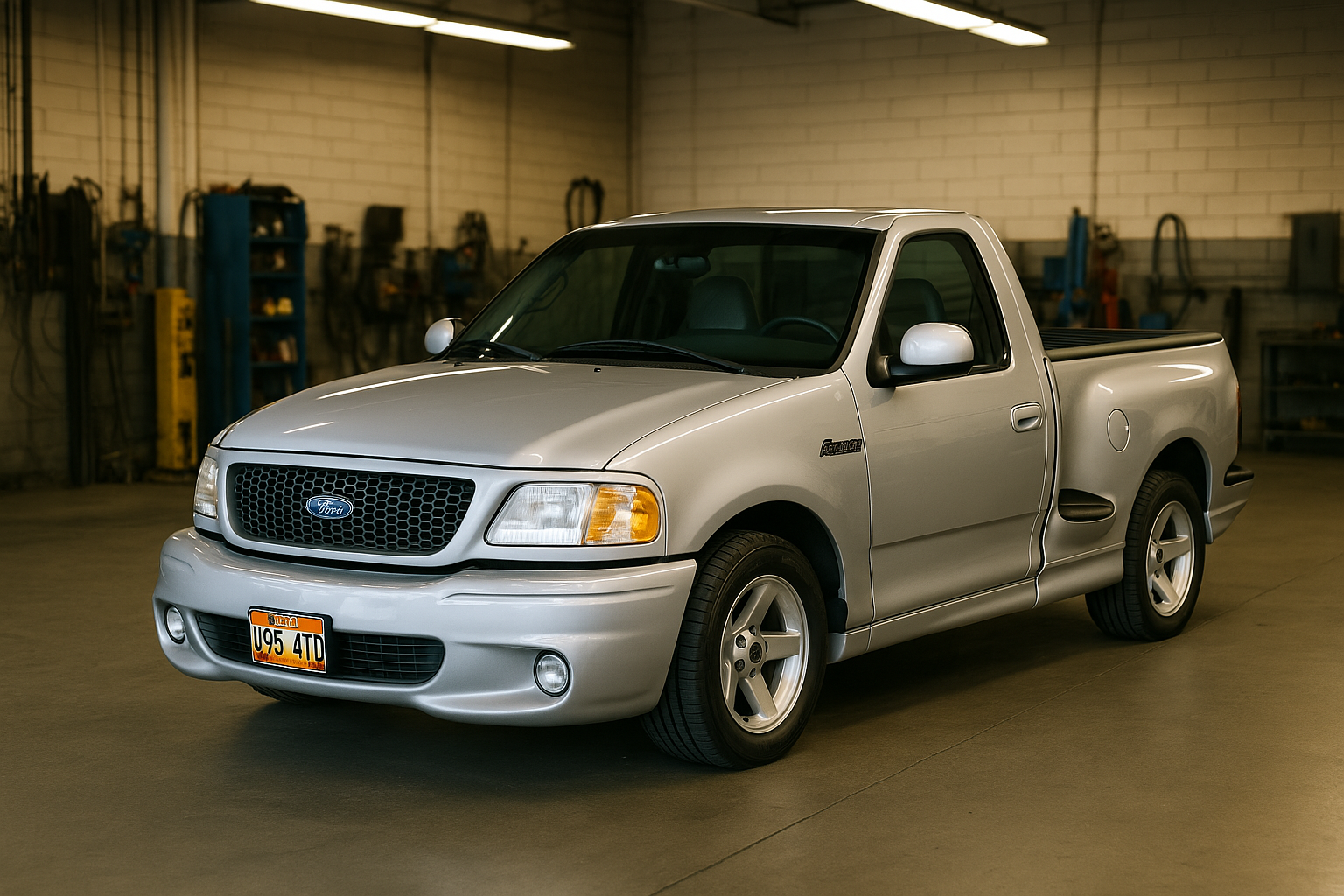
If there was ever an engine that made Ford techs weep into their coffee, this was it.
The 5.4L 2-valve and 3-valve Triton V8 — found in:
- F-150s
- Expeditions
- Navigators
- Mustangs
- And a whole army of work vans and SUVs
…was infamous for two horrible engineering decisions:
1. Spark plugs that ejected themselves from the cylinder head like bottle rockets
…taking the threads with them.
2. Spark plugs that broke off inside the engine and refused to come out without an exorcism
Yes, really.
If you had a 2-valve 5.4L, it had only 4 threads per plug hole. Aluminum heads + heat cycles + weak threads = BOOM. Plug gone. Engine misfires. Threads stripped.
If you had the 3-valve 5.4L, you were in a different kind of hell: Ford’s “brilliant” long-reach 2-piece spark plugs would fuse to the cylinder head via carbon buildup. When you tried to remove them during a simple tune-up?
SNAP. The tip stayed inside the engine. Extraction tool time.
And the cherry on top? Cam phaser failure. Ticking noises. Rough idles. Timing chain stretch. All in an engine that was supposed to be “maintenance free.”
Forum quote:
“$700 to change spark plugs. On a truck. I miss my old 350 Chevy.” — F150Forum user “WrenchinDad”
Common Fixes:
- Heli-coil or Timesert thread repairs
- $500+ plug changes (with prayer candles)
- Cam phaser lockout kits or full replacements
- Some owners just said screw it and swapped in a Coyote
Repair Cost:
- Spark plug ejection: $800+
- Broken plugs: $1,000+
- Cam phasers: $1,500 if you’re lucky
Better Option: Chevy’s 5.3L Vortec V8. It just ran. No plug drama. No phasers. No “tune-ups that turn into mortgage payments.”
Ford 6.0L PowerStroke Diesel (2003–2007): The PowerJoke
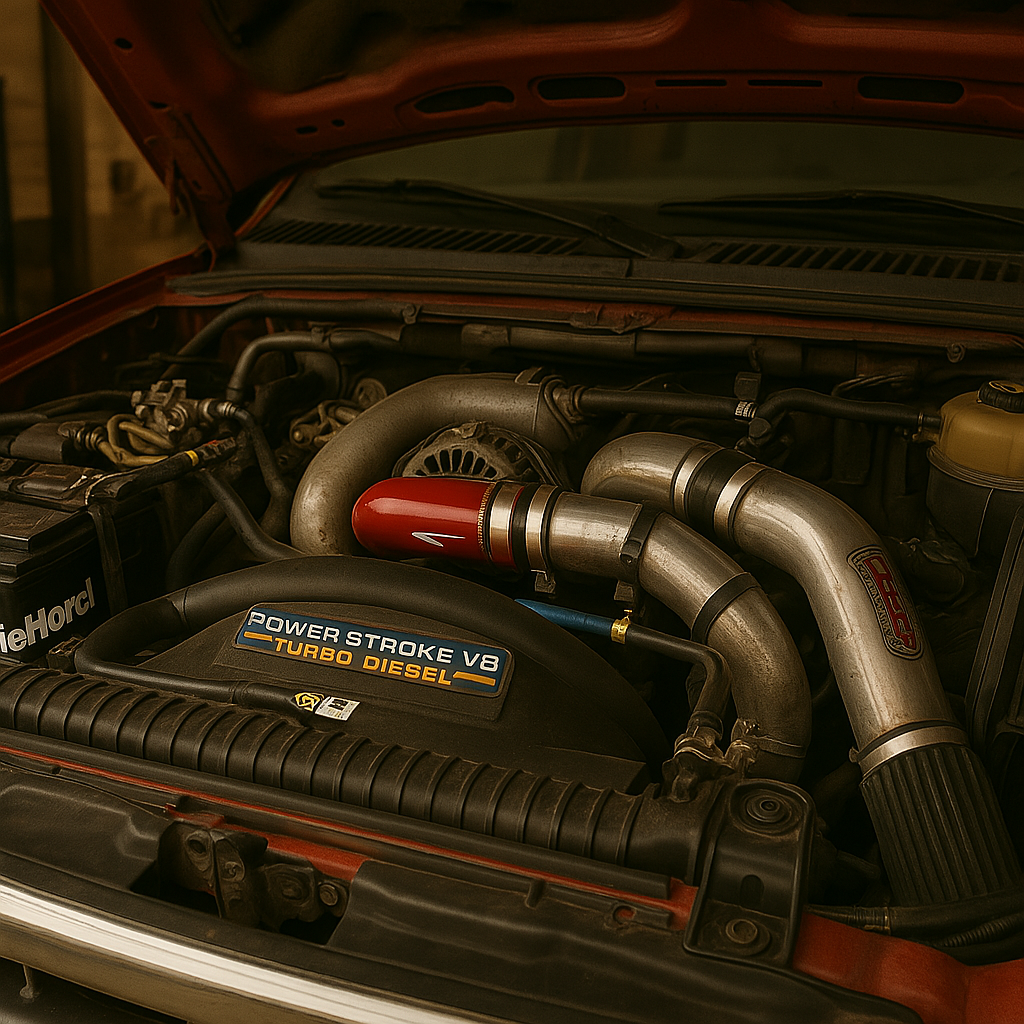
The 6.0 PowerStroke should’ve been Ford’s diesel masterpiece.
Instead, it became the class-action lawsuit of the decade.
Ask any diesel tech what engine gave them PTSD, and this one’s top three every time.
Built by Navistar, the 6.0L V8 diesel went into:
- F-250 and F-350 Super Duties
- E-series vans
- Excursions
And it promptly blew head gaskets, puked coolant, seized turbos, clogged EGR coolers, and ate fuel injectors for breakfast.
The list of failures is absurd:
- EGR cooler cracks
- Oil cooler clogs
- Head bolts stretch and lift the heads
- Turbo vanes seize
- High-pressure oil pump failures
- Injector o-ring leaks
- FICM (fuel injector control module) burnout
Forum quote:
“They should’ve called it the 6.0 'GrenadeStroke'… 500hp after a $10k 'bulletproofing' job.” — PowerStrokeNation user “SmokeJunkie”
Common Fixes (aka Bulletproofing):
- ARP head studs
- Upgraded EGR cooler or delete
- Oil cooler replacement
- New turbo
- Updated injectors
- External coolant filters
- ECM reflashes
- Cab-off engine jobs (yes, Ford designed it so major repairs are easiest with the cab removed)
Repair Cost:
- Bulletproofing: $6,000–$10,000
- Just head gaskets and studs: $4,000+
- Turbo: $1,500
- FICM: $800
Better Option:
- 7.3L PowerStroke (1999–2003): Less power, bulletproof
- 5.9L Cummins: Laughs in 400,000 miles
- Duramax LBZ (2006–2007): Near-perfect reliability with real towing power
Mazda Renesis Rotary (RX-8, 2004–2012): Flooded with Regret
Yes, we’re roasting rotaries again.
Because Mazda doubled down on the Wankel weirdness with the Renesis in the RX-8… and paid the price.
The 1.3L twin-rotor engine:
- Revved to 9,000 RPM
- Made 238 hp
- …and usually needed a rebuild before 60k miles
Why? Same old story:
- Apex seals wear out fast
- Floods if you breathe on it wrong
- Burns oil by design
- Poor lubrication
- Bad coil packs
- Crappy compression over time
Mazda ended up replacing tens of thousands of engines under warranty. The problem was so widespread, they extended engine coverage to 100,000 miles.
Forum quote:
“Love the car, hate the engine. It’s like owning a greyhound with asthma.” — RX8Club user “RotaryRyan”
Common Fixes:
- Pre-mix oil into fuel
- Coil upgrades
- Compression tests every oil change
- Carry a jump box… seriously
Repair Cost:
- Engine rebuild: $3,000–$5,000
- Mazda reman engine: ~$6,000 installed
- LS swap? Cheaper in the long run.
Better Option:
- Honda S2000: Rev-happy, reliable
- Nissan 350Z: More torque, fewer headaches
- Toyota GR86 (modern): Feels like a rotary… but lives past 80k
Still think the 2000s were safe?
We’re not even to the exploding spark plug Mustangs or self-destructing Shelby GT350s yet.
Scroll down… because the 2010s came with more power, more tech, and a brand-new set of very expensive mistakes.
Let’s finish this engine funeral tour the only way we know how — loudly, aggressively, and with the occasional blown head gasket.
Coming up next.
The 2010s: When Power Met Paranoia
By now, you’d think carmakers would've figured it all out.
Direct injection. Variable valve timing. Turbocharging. Fancy aluminum blocks. Flat-plane crank V8s. It all sounds sexy… until you realize you need a software update, two lawsuits, and a priest to keep your engine from imploding before 30k miles.
Let’s expose the worst offenders — starting with a Ford that was so hot it literally blew its own head off.
Ford Focus RS (2016–2017): Gasket Roulette
The RS was the hot hatch of dreams — 350 hp, AWD, launch control, tail-happy drift mode. But for early buyers, it came with a side of coolant in the cylinders and white smoke on acceleration.
Why?

Ford accidentally used the wrong head gasket on a bunch of RS engines — a Mustang 2.3L EcoBoost gasket — and it didn't seal the RS head design properly. Cue blown gaskets. Cylinder scoring. And in some cases, full engine replacements under 10k miles.
Forum quote:
“You’d think $40k would buy you a rally car, not a fog machine.” — FocusRS.org user “TrackMeNot”
Common Fixes:
- Head gasket replacement
- Cylinder head inspection (or full replacement)
- Ford service bulletin + recall repairs
Repair Cost (Out of Warranty):
- Head gasket job: $2,500+
- Engine swap: $6,000–$8,000
Better Option:
- Honda Civic Type R: Same track-ready attitude, no head gasket drama
- VW Golf R: Softer ride, but rock-solid drivetrain
- Subaru WRX STI: Just kidding — we’ll get to their blown ringlands in a minute…
Ford Shelby GT350 Voodoo V8 (2016–2020): Flat-Plane Fame, Flat-Bearing Shame
The 5.2L flat-plane crank V8 in the Shelby GT350 screams to 8,250 RPM.It’s America’s Ferrari — raw, emotional, addictive.

Too bad some of them started eating rod bearings like popcorn.
Early GT350s, especially without the Track Package, lacked oil coolers. Owners took them to track days, spun them past 8k, and — boom — bearing failure, scored cranks, and windowed blocks.
Even street cars saw failures.Oh, and the “BBQ Tick”? That weird clatter you hear at idle? Nobody really knows what causes it — Ford says it’s “normal.” Owners say it’s “terrifying.”
Forum quote:
“I checked the oil every fill-up. Didn’t matter. Spun a bearing at 8,300 RPM pulling onto the freeway.” — Mustang6G user “WickdVoodoo”
Common Fixes:
- Track Pack oil cooler retrofits
- Frequent oil changes with 5W-50 synthetic
- Post-failure? Full engine replacement — no rebuilding that Voodoo
Repair Cost:
- New crate engine: $18,000–$22,000
- Install: $2,000+
- Oil cooler kit: $500–$800
Better Option:
- Camaro SS 1LE: More durable LS/LT V8, track-ready from the jump
- Charger/Challenger Scat Pack: Big Hemi power, fewer revs, less drama
- Wait for the GT500: Cross-plane crank, 760 hp, way less likely to explode
Ford 5.0L Coyote V8 (2011–2014 Early Gen): The Tick and the Tensioner
Let’s be clear — the Coyote V8 is one of the best modern V8s ever made.
But those first few years? They had a dark little secret.
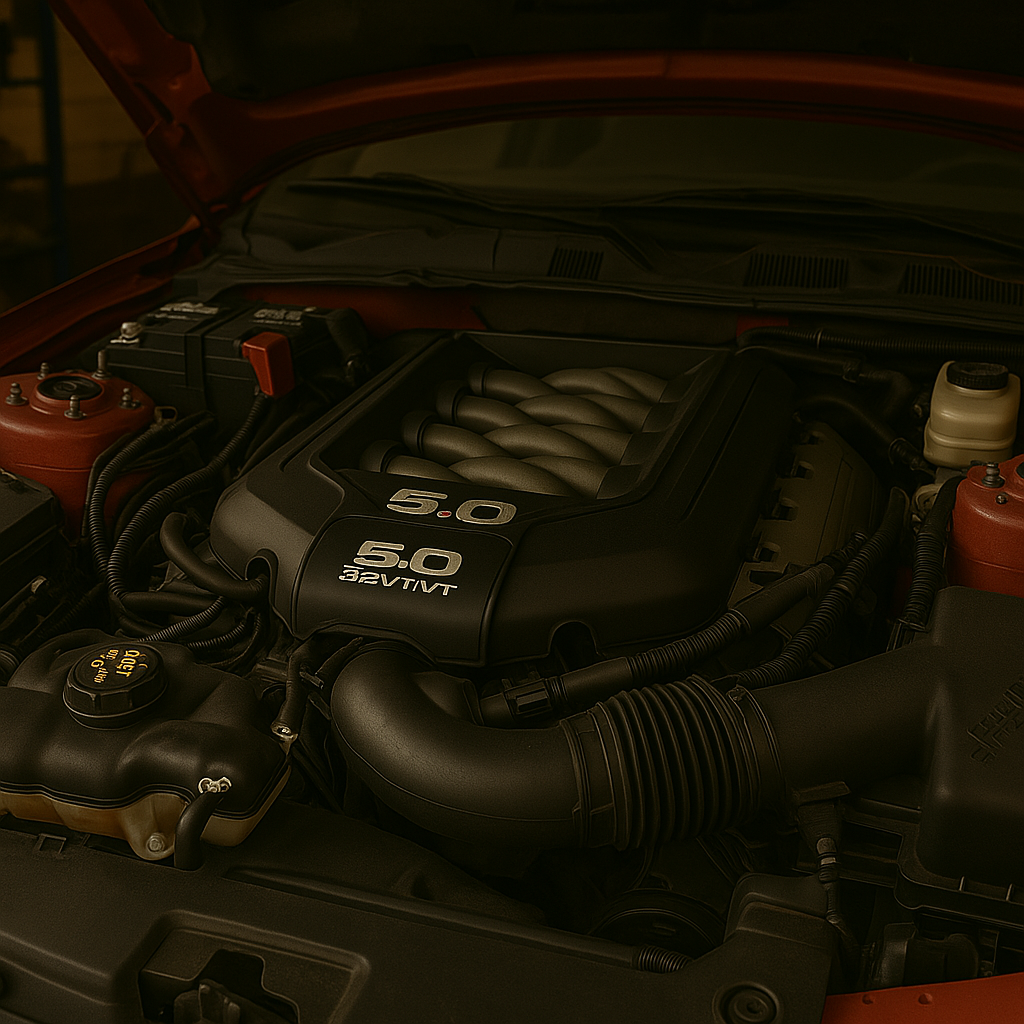
The infamous Coyote Tick.
Caused by:
- Valve lash adjuster noise
- Injector noise
- Or worst-case scenario: cam phaser rattle or timing chain tensioner wear
Plenty of engines ran just fine with the tick.But some… didn’t.
The issue got bad enough that Ford dealers started issuing “no repair required” bulletins — basically saying, “Yes, it ticks. No, we won’t fix it unless it actually explodes.”
Forum quote:
“Sounds like it’s grinding itself to death at idle, but Ford says it’s ‘within spec.’ Yeah, okay.” — MustangSource user “CoyoteCringe”
Common Fixes:
- Oil weight tweaks (some used 5W-30 or 10W-40 instead of 5W-20)
- Updated cam phasers
- Aftermarket tensioners
- “Live with it” if it didn’t worsen
Repair Cost:
- New cam phasers: $800–$1,200
- Full timing job: $2,000+
- If it really goes bad: engine replacement
Better Option:
- 2015+ Coyote (Gen 2 and Gen 3) had fewer issues
- Chevy 6.2L LT1 V8 (Camaro SS, Corvette): no ticking, no nonsense
Honorable 2010s Mentions (aka Dishonorable Disasters)
Let’s lightning-round a few more 2010s stinkers:
- BMW N63 Twin-Turbo V8 – Timing chain stretch, injector leaks, valve stem seals that turn it into an oil smoker. BMW issued a “Customer Care Package” — aka, “You bought a ticking time bomb, let us babysit it.”
- Subaru EJ257 (WRX STI) – Legendary for blown ringlands, oil starvation, and overheating. Run it hard with weak tune? You’re rebuilding the short block at 30k. Again.
- Cadillac 2.0T (ATS/CTS) – Turbo failures, timing chains, and oil consumption so bad that class-action lawsuits followed.
- Chrysler’s Pentastar V6 (early years) – Head failures, ticking noises, and rockers that collapse like a house of cards.
Conclusion: When Myth Meets Maintenance
Here’s the truth no one wants to hear:
Every generation had some incredible muscle — and a whole lot of engineering trainwrecks riding shotgun.
From the Hemi that needed a pit crew…
To the rotary that spun itself to death…
To the Triton that couldn’t hold a spark plug…
To the GT350 that sang like a Ferrari — until it snapped a rod at redline…
The Muscle Car Myth is alive and well.
And while the dream is intoxicating — that high-horsepower, high-revving, tire-roasting freedom — the reality is often a tow truck, a blown gasket, and an empty bank account.
So yeah, chase the dream. But do it with your eyes open… and a spare engine on the stand.
The Muscle Car Engine Blacklist: 27 Engines To NEVER Buy
After 26 years as a master technician, I've seen catastrophic muscle car engine failures that would make you sick. I've compiled the definitive blacklist of engines with fatal design flaws - including production dates, VINs to avoid, and early warning signs of failure.

